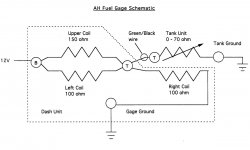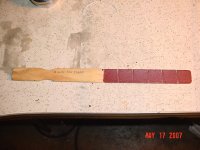-
 Hi Guest!
Hi Guest!
If you appreciate British Car Forum and our 25 years of supporting British car enthusiasts with technical and anicdotal information, collected from our thousands of great members, please support us with a low-cost subscription. You can become a supporting member for less than the dues of most car clubs.
There are some perks with a member upgrade!**Upgrade Now**
(PS: Subscribers don't see this gawd-aweful banner

Tips
- We have a special forum called "Member Articles" where you can submit actual articles for consideration for publication. Learn More
- Don't have an Avatar? If not, your avatar will default to the 1st character in your username. Go into "Account Details" to change your Avatar.
- Some basic forum navigation info: click
Hey - did you know if you click on the title of a thread it will take you to the first unread post since you last visited that thread?
- Hey Guest - Is your British Car Club in our Clubs database? If not, send me a PM - Basil

- Looking for a local club? Click the "Clubs" tab above and browse hundreds of clubs world-wide.
- Add Android or iPhone APP: click
- Did you know - any picture or video you add in your posts in any marque-specific forum will also get added to the Media Gallery automatically.
- A few more tips about posting and replying: click
- Hey there Guest - be sure to keep your profile page up to date with interesting info about yourself: learn more
- More tips and tricks on Posting and Replying: click
 STOP!! Never post your email address in open forums. Bots can "harvest" your email! If you must share your email use a Private Message or use the
STOP!! Never post your email address in open forums. Bots can "harvest" your email! If you must share your email use a Private Message or use the  smilie in place of the real @
smilie in place of the real @
- Want to mention another member in a post & get their attention? WATCH THIS

- So, you created a "Group" here at BCF and would like to invite other members to join? Watch this!
- Hey Guest - A post a day keeps Basil from visiting you in the small hours and putting a bat up your nightdress!
- Hey Guest - do you know of an upcoming British car event?
 Pretty Please - add it to our Events forum(s) and add to the calendar! >> Here's How <<
Pretty Please - add it to our Events forum(s) and add to the calendar! >> Here's How << 
- Hey Guest - you be stylin'
Change the look and feel of the forum to fit your taste. Check it out
- If you run across an inappropriate post, for example a post that breaks our rules or looks like it might be spam, you can report the post to the moderators: Learn More
- If you would like to try some different "looks" or styles for the site, scroll to the very bottom, on the left and click the Style Selector.
You are using an out of date browser. It may not display this or other websites correctly.
You should upgrade or use an alternative browser.
You should upgrade or use an alternative browser.
Fuel Gauge Problem
- Thread starter Dave Richards
- Start date
Dave Richards
Jedi Knight
Offline
dklawson said:Before we leave the subject of the gauge, let's just confirm one last thing. Remove the green/black wire from the gauge (NOT the sender, from the gauge). Hook a test wire up to that terminal on the gauge, make sure the gauge case has a good ground, and switch on the ignition. With your test wire NOT touching anything the gauge should show "FULL". Now touch the bare end of the test wire to chassis ground. The gauge should go to "EMPTY". If it does, it means the gauge is OK and as others have said the problem is either an open in the sender or the sender has a poor ground connection.
Thanks for taking the time to explain what you have. In regards to the process quoted above, I did it and the gauge behaves as you, and others describe. I will look at the pdf file you've linked to, and it looks like I'm going into the tank!
Thanks to all of you for your help and guidance.
Dave Richards
Jedi Knight
Offline
Thanks, Dave Russell. That was helpful and succinct.
Offline
This is the only reason I questioned the dash unit or the Grn/Blk wire. I would have expected a higher reading than 10 ohms.dar100 said:Keoke said:Dave , What does the meter show with the Grn/Blk wire just disconnected from the sensor? --Keoke
About 10 ohms. BUT, not when the grn/blk wire is disconnected from the gauge, then it doesn't register...no connection.
What do you think?
See the attached schematic.
D
Attachments
Check that the wiper arm shaft inside the sending unit is making a good connection through to the sending unit body. Corrosion can start between the shaft and body and cause an erratic connection and consequently, resistance. The design of the sending unit is poor in this regard. From the symptoms described I doubt the gauge is a problem.
Ed_K
Jedi Knight
Offline
Dave Russell said:If you think I'm cluttering things up, I'll be glad to remove the post. What say you?
D
......... I was just reading my May copy of Austin Healey Magazine and noticed the author's name of the tech tips article. It was our own Dave Russell ! Maybe you all already knew this but I didn't....
.... No Dave, I don't think you are cluttering things up !
Ed
Offline
I agree - When I really need to know I use this. See pic.BIBBER said:...I may just keep that old stick afterall....
D
Attachments
Dave Richards
Jedi Knight
Offline
Dave Russell said:I agree - When I really need to know I use this. See pic.BIBBER said:...I may just keep that old stick afterall....
D
/bcforum/images/%%GRAEMLIN_URL%%/lol.gif /bcforum/images/%%GRAEMLIN_URL%%/lol.gif OK, but I'm gonna have to have a custom one made, because the filler neck is different than a 100!
BIBBER
Jedi Knight
Offline
<div class="ubbcode-block"><div class="ubbcode-header">Quote:]...I may just keep that old stick afterall....
I agree - When I really need to know I use this. See pic.
D
[/QUOTE]
DAVE'S IS THE CUSTOM MODEL...i JUST HAVE A PLAIN OLE'STICK.
Picked it up on the side of the road the day I wish my gauge worked and proved I was bone dry!!!!...I've kept in the car ever since and use it religously!!!
I agree - When I really need to know I use this. See pic.
D
[/QUOTE]
DAVE'S IS THE CUSTOM MODEL...i JUST HAVE A PLAIN OLE'STICK.
Picked it up on the side of the road the day I wish my gauge worked and proved I was bone dry!!!!...I've kept in the car ever since and use it religously!!!
AndrewMawson
Jedi Trainee
Offline
Ah - but being a British car it surely should be calibrated in British Gallons, not the skimpy 'Merican ones <G>
Dave Richards
Jedi Knight
Offline
Indeed, Imperial Gallons!
Dave Richards
Jedi Knight
Offline
Dave Russell said:<span style="color: #CC0000">Results of today's comprehensive tests are noted in Red below. Thanks Dave for the easy to follow steps. </span>
Checks:
A- Dash unit -
1- Key on - There should be12 volts from the two green wires to ground. Terminal on gage marked B. <span style="color: #CC0000">10 volts </span>
2- Key on - T terminal on gage, green/black wire disconnected, gage should read above full. <span style="color: #CC0000">NO, reads below empty /bcforum/images/%%GRAEMLIN_URL%%/frown.gif this is different than yesterday!</span>
3- Key on - T terminal on gage grounded, gage should read empty. <span style="color: #CC0000">Yes</span>
If this checkes the dash unit is OK. If not, there is something amiss in the gage. <span style="color: #CC0000">It's the gage, at this point... /bcforum/images/%%GRAEMLIN_URL%%/frown.gif</span>
B- Sender unit -
1- green/black wire disconnected. Sender terminal to ground should read 70 ohms full, 0 ohms empty. 30 to 40 ohms tank 1/2 full. Remove the sender to check float travel, ohms, & if the float is partially filled with fuel. Make sure that as the float travels there are NO discontinuities or jumps on the ohmeter reading. <span style="color: #CC0000">0 ohms empty...55ohms full, very smooth from 0 to 55, no jumps, no blips. Float intact and empty.</span>If this checks, the sender is OK.
2- Green/black wire at sender disconnected. Key on. Dash gage should read above full. <span style="color: #CC0000">Reads empty, this is different than yesterday</span>If the dash gage does not read above full the green/black wire is shorted or partially shorted to ground.
3- Green/black wire at sender disconnected from sender & grounded. Ignition switch on. Dash gage should read empty.
If the dash gage does not read empty, the green/black wire is broken or not making connection somewhere. <span style="color: #CC0000">gage reads empty</span>
Seems pretty obvious, it's the gage. Must be yesterday the gage was maybe getting ready to die?
One more thing, there's a little tab of metal that seems to connect the two terminals on the back of the gage. It's split perfectly at the centerat the hole in the tab. Would this make a difference?
Offline
Quote:
"One more thing, there's a little tab of metal that seems to connect the two terminals on the back of the gage. It's split perfectly at the center at the hole in the tab. Would this make a difference?"
---------------------------
Are you sure that the tab is metal. Obviously it would short out the gage if the two sides of the split touched. It would be more reasonable that the tabs were fiber insulators. I've never seen such on the back of a Healey gage, but there is a lot that I haven't seen.
D
"One more thing, there's a little tab of metal that seems to connect the two terminals on the back of the gage. It's split perfectly at the center at the hole in the tab. Would this make a difference?"
---------------------------
Are you sure that the tab is metal. Obviously it would short out the gage if the two sides of the split touched. It would be more reasonable that the tabs were fiber insulators. I've never seen such on the back of a Healey gage, but there is a lot that I haven't seen.
D
Dave Richards
Jedi Knight
Offline
Ok, thanks Dave. Any suggestions on the appropriate place to send the gauge for repair?
BTW, when I filled the tank with gas yesterday and ended up taking out the cover to get to the sender, I found gas seeping around the sender, so it needed a new gasket anyway.
Thanks again.
BTW, when I filled the tank with gas yesterday and ended up taking out the cover to get to the sender, I found gas seeping around the sender, so it needed a new gasket anyway.
Thanks again.
Offline
I think Nisonger should be fairly close to you. Try them first.
Might as well send both the dash & tank units.
https://www.nisonger.com/contact.htm
D
Might as well send both the dash & tank units.
https://www.nisonger.com/contact.htm
D



